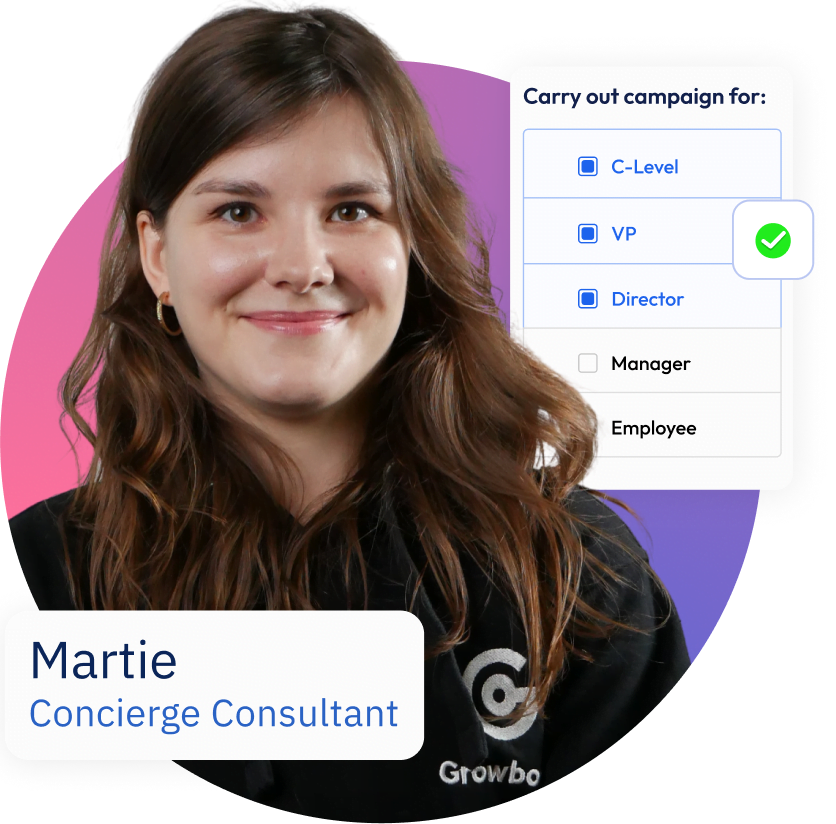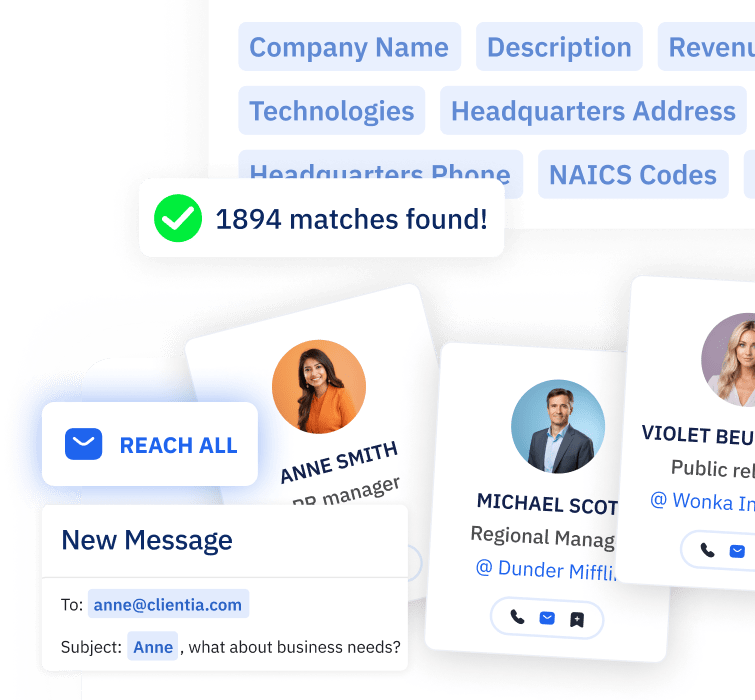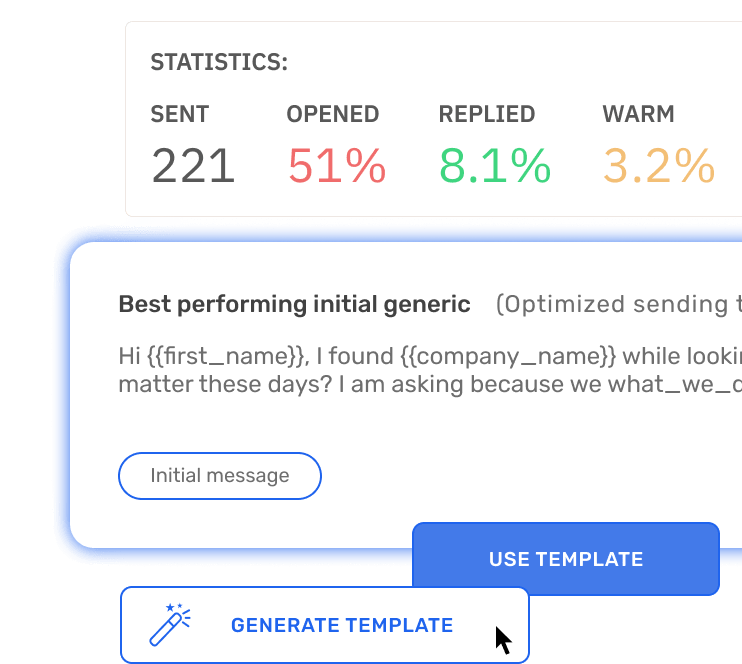So your marketing team has gotten your campaign out to the world. Great! Now comes the second half of the endeavor – qualifying the leads that your campaign brings in.
In this article, we’ll explain what a sales qualified lead is, how lead qualification works, as well as how you can qualify leads in sales campaigns.
What Is Lead Qualification?
What does it mean to qualify a lead? Lead qualification means taking the necessary steps and measures to evaluate an incoming prospect for their potential to convert into a sale. This involves a number of things, but in simple terms has to do with considering factors like the customer’s interest, alignment and budget in relation to what’s being sold.
Qualified Leads vs. Unqualified - What Is The Difference?
Most marketing and sales teams are familiar with the term ‘lead’ itself. A lead is defined as an individual or a company that has shown some level of interest in your product.
However, within this broad definition, there lies a big distinction – that between qualified and unqualified leads.
Sales qualified leads are those who fit your ideal customer profile in terms of things like budget, authority, need and timeline. They’re further along in the sales funnel than unqualified leads, and as such have a higher chance of converting into paying customers.
Unqualified leads, on the other hand, are those that don’t fit your ideal customer profile as closely. They may be at an earlier stage in their buyer’s journey, be marketing qualified leads, or show less interest, need or budget for what you’re selling.
Why Is Lead Qualification Important?
While some people may think the process of lead qualification is unnecessary and reserved for larger businesses, the truth is that any business of any size can benefit from a lead qualification strategy. There are a number of reasons why.
Helps Focus Resources
One of the most positive implications of lead qualification is that it allows you to focus your resources on those prospects that are most likely to convert into a sale. By doing this, you can save a lot of your time and money.
Avoids Wasted Time On Unqualified Leads
Another benefit of lead qualification is that it helps you avoid wasting time on unqualified leads. This is important because having a sales rep try to sell to someone who is not interested or not a good fit for your product or service can be a huge waste of time and resources.
Increases Odds Of Closing More Deals
As we mentioned before, lead qualification can help you focus your sales process on the most promising prospects. By doing this, you’re more likely to close more deals, grow your business and avoid the negative consequences of stagnation.
Seek, pick, and reach
Connect with your potential customers
- 180m+ contacts
- Advanced filtering
- Multichannel sequences
- CRM integrations
Lead Qualification Process - How To Qualify Leads
There’s no one-size-fits-all answer to this question since the lead qualification process will vary from business to business and depend on factors like the products or services being sold and the target customer base. However, there are some general steps that most businesses can follow to qualify their leads.
Define Your Ideal Customer Profile
The first step in lead qualification is to work with your marketing team to define your ideal customer profile. This will help you identify the characteristics of your best customers so you can more easily identify sales qualified leads.
To do this, consider things like budget, authority, need and timeline. Once you have a good understanding of your ideal customer profile, you can move on to the next step.
Studying the list of your existing customers may also be significantly helpful. For instance, you can observe trends such as the companies your customers prefer to work with, what is those companies’ LTV and what their characteristics are (size, industry, who are the decision makers etc.)
Develop Lead Qualification Criteria
The next step is to develop lead qualification criteria. This will help you and your marketing team determine which potential customers are qualified and which are not. Like we’ve already mentioned, this criteria can vary based on the organization’s sales cycle, given industry and product. We’ll touch more on this later in terms of what types of lead qualification frameworks are out there and how to qualify a lead with them.
Collect Data And Score Leads
Once you have your lead qualification criteria in place, the next step is to collect data on your potential customers and score them. There are a number of ways to do this, but one common method is to use a lead scoring system.
A lead scoring system assigns points to leads based on certain criteria that you’ve defined as being important for your business. For example, you may give more points to leads that fit your ideal customer profile or that have shown interest in what you have to offer.
Once you’ve collected data and scored your leads, you can then move on to the next step.
Review And Prioritize Leads
The next step is to review your leads and prioritize them. Going through some qualifying questions will help you determine which leads are worth pursuing and which ones are not.
To do this, start by looking at the lead scores that you assigned earlier. Leads with high scores should be given priority over those with lower scores.
You should also consider other factors like budget, timeline and need when reviewing your leads.
After you’ve reviewed and prioritized your leads, you can then move on to the final step.
Convert Leads Into Opportunities
The last step in the lead qualification process is to convert your qualified prospect into an opportunity. This is where you’ll start working on closing the sale.
To do this, you’ll need to reach out to your qualified sales leads and start building relationships with them. This can be done through things like phone calls, emails, social media or in-person meetings.
Once your sales and or marketing team has built a relationship with a lead and they’re interested in your product or service, you can then start working on closing the sale.
Reach More with Less Effort
Connect with Potential Clients at scale
- AI message generator
- E-mail verification
- Multichannel sequences
- A/B testing
Lead Qualification Frameworks
Remember the lead criteria we mentioned earlier? We’re going to go into more detail on that here.
There are a number of different lead and sales qualification frameworks that businesses can use. Although each has the same purpose of qualifying a lead, they all have different methods of doing so.
Here are three of the most common qualification frameworks:
BANT Framework
The BANT framework is one of the most popular and well-known lead qualification frameworks. It’s used by businesses across a variety of industries to assess a prospect’s circumstances and qualifications.
The following are the four criteria that a lead must meet in order to be considered qualified under this framework.
Budget
Budget is all about considering the money involved in making a purchase. For example, if you’re selling a high-end product, you’ll likely need to know that the lead has the budget to make such a purchase.
You will make your life simpler if you ask the lead these questions:
- Do they have the budget to make a purchase?
- How soon will they make a purchase?
- What is their budget for this type of product or service?
Authority
Authority refers to the decision-making power that a lead has. For example, if you’re selling to businesses, you’ll want to make sure that you’re talking to the decision-maker
Some good questions to ask include:
- Who is the decision-maker?
- Do they have purchasing authority?
- What is their timeframe for making a purchase?
Need
Need refers to the requirement that a lead has for your product or service. Here, you’ll want to determine the pain points and challenges that have driven them to seek out what you’re selling.
Some good questions to ask include:
- What type of problem are they addressing?
- Can the product you’re selling solve this problem?
- When did they identify this problem?
Timeline
The timeline is about the – you guessed it – timing of the lead’s purchase. You’ll want to know when they plan on making a purchase and how soon they need your product.
Some good questions to ask include:
- When do they need the product or service?
- How long have they been researching solutions?
- What is their buying timeline?
Leads can be considered qualified prospects if they meet at least 75% of your criteria in this framework’s lead qualification checklist.
CHAMP Framework
The CHAMP framework is another common lead qualification framework. It focuses on addressing consumer needs and is quite similar to BANT in nature. The acronym CHAMP itself stands for CHallenges, Authority, Money, and Prioritization, each with a pivotal role in gauging a lead’s overall viability.
Challenges
You’ll want to identify and assess the challenges that a lead is facing. This will help you determine whether or not your product or services can address their needs and buyer profile.
Authority
Determine if who you’re connecting with will be the decision maker in the purchasing and sales process.
Money
Consider the budget that a lead has for your product. How much do they have and how much are they willing to pay?
Prioritization
Gauge how much of a priority solving this problem is for the lead. Is it Urgent? Important? Nice to have? Knowing this will help you understand how motivated they are to make a purchase.
MEDDIC Framework
The MEDDIC framework is another popular lead qualification framework. It’s often used in a longer sales process and is focused at identifying the benefits your product can offer a prospect.
The acronym MEDDIC stands for the terms metrics, economic buyer, decision criteria, decision-makers, influencers, and champions. Here’s a quick rundown of what each means.
Metrics
Determine how the potential buyer is looking to benefit from your solution. This value should be quantifiable so that you can measure the potential success of your product or service.
Economic Buyer
An EB is the individual who is responsible for making the final purchasing decision. Identify who has responsibility for signing off on the budget for the actual sale.
Decision Criteria
What factors will the buyer be considering when they make their decision? These should be specific and measurable so that your sales reps and marketing team can position your product or service accordingly.
Decision Makers
Who else is involved in the decision-making and sales process? In addition to the buyer, there may be others who need to sign off on the purchase. Identify them and assess their role in the final decision process.
Influencers
What might have an influence over decision-makers? This could be anything from budget restrictions to company politics. It’s important to identify these factors so that your sales reps can address them.
Champions
A champion is an individual who is passionate about your product or service and will help to push the sales process along. They may not have decision-making power, but they can be influential in getting your product or service approved.
Competitors
Who else is vying for your prospect’s business? Assessing the competition will help you to determine your unique selling proposition and position your product or service accordingly.
How Growbots Can Help With Lead Qualification
If you’re looking for a tool to help your sales team with lead qualification, Growbots may be a good option for you. We offer a number of features that can help, including:
Predictive Lead Scoring (Warm & Cold responses)
Growbots can give you a predictive lead score which makes the life of both marketing and sales team easier. Due to the usage of machine learning capabilities, it’s free from human error and is known to have other benefits such as quick and comprehensive results, time and cost saving.
leave no lead unexplored
Every potential client within reach
- 180m+ contacts
- CRM integrations
- 23 Prospect filters
- 15 Company filters
Customizable Workflows
You can create customizable workflows within Growbots helping you automate your cold mailing. This can save your sales and marketing team time and ensure that leads are getting the attention they need.
Lead Segmentation
Growbots offers powerful lead segmentation capabilities. This means that you can target your leads with laser precision, making it more likely that you’ll qualify them.
If you’re interested in learning more about how Growbots can help with your lead qualification, lead generation and sales process, please contact us. We’d be happy to answer any questions you have.
Learn more:

Maciej Skoczyński
Account Executive Team Leader at Growbots

























